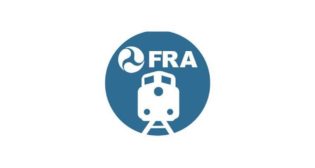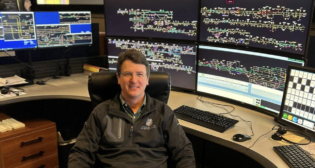
Short Line/Regional Perspective: Adapting to a changing railroad environment
Written by William C. Vantuono, Editor-in-Chief  By Richard F. Timmons, President, American Short Line and Regional Railroad Association
By Richard F. Timmons, President, American Short Line and Regional Railroad Association
No organization that prides itself on performance and measurable results can expect to grow and prosper without dedicated training—for employees, staff, and management, as well as the education of its customers. This is fundamental to team building as well as sound and profitable railroading. Of course, productivity is an important outcome as well, and one unquestioned benefit to any training program is that worker productivity significantly improves following training.
With the passage of HR. 2095, the Railway Safety Improvement Act of 2008 (RSIA), the world of railroading as we have known and understood it for decades has changed. This is a more far-reaching collection of changes than the Staggers Act of 1980. Staggers laid the foundation for the dramatic resurgence of freight railroads during the past 25 years, but the RSIA will have a much greater impact on a broader range of areas.
With the new law comes a wave of regulatory requirements that compel significant changes from many of the current procedures now in place, as well as unprecedented new technologies and equipment to be phased in during the next several years. Other federal government policy and equipment developments unrelated to HR. 2095 also are under way. These momentous changes bring to railroad management serious issues related to preparing its work force for the future to insure employee safety and professionalism while on the job.
The most effective and profitable organizations have traditionally embraced some form of structured employee training that focuses on worker education and skills to enhance knowledge, understanding, and the execution of job tasks to specified standards. The object, of course, is to make certain the employee is safe, productive, and well aware of required performance standards while serving the long term interests of the company and its’ customers.
However, for management, the balancing act of beneficial employee training while accepting costs and an absence during this training is a difficult tradeoff. The old on-the-job techniques are not going to do the job in this new era simply because much of what we are working with today is too new to rely on seasoned railroaders to cover all the bases. There is little question that the most successful process for educating and training a workforce is through dedicated instruction. This only succeeds, however, if senior management has employee development and competence as a priority, and invests the resources to pursue training programs that improve employee skills and professionalism. This training approach is not a one-shot concept, but a progressive year-in, year-out program for each employee aimed at steadily building worker expertise and mastery of his field.
Today the railroad industry is beginning to capitalize on new educational technologies that make training our work force achievable without divorcing the employee from his job for an extended period of time. Online training modules prepared with short lines in mind are available that can prepare the employee for many of the job demands of the future. Webinars now address specific aspects of the industry that need clarification or introduce wholly new subjects or equipment. Class I railroad schools provide the options of attendance or online training, and some sponsor specialized training at state-of-the-art facilities. A number of universities now offer railroad certificate or diploma programs that are structured for short stays at the university, a return to work followed a month later by another session at the university. Mobile training classes sponsored by the Class I railroads, ASLRRA, AREMA, and the FRA make available short, high-intensity programs across the country to get railroaders up to speed on the most current and important topics and procedures. A prime example of this is the wide range of bridge inspection and maintenance classes being provided in numerous forums in response to HR 2095. DVDs are now becoming an important component of training and can be shipped easily to railroads or individuals for their home station use. In recent months HazMat and Security DVDs have been provided to ASLRRA members.
Excellent educational opportunities that are inexpensive and convenient are at hand for those managers that are committed to safety, competence, and professionalism for their workers. Training lays the foundation for the future and develops railroaders with the correct attitudes, knowledge, and skills to adapt to the changing workplace. Many visionary railroad leaders have committed to this progressive training approach. Now is the time for all of us in management to focus on employee professional development to meet the demands of the future.
No organization that prides itself on performance and measurable results can expect to grow and prosper without dedicated training—for employees, staff, and management, as well as the education of its customers. This is fundamental to team building as well as sound and profitable railroading. Of course, productivity is an important outcome as well, and one unquestioned benefit to any training program is that worker productivity significantly improves following training.
With the passage of HR. 2095, the Railway Safety Improvement Act of 2008 (RSIA), the world of railroading as we have known and understood it for decades has changed. This is a more far-reaching collection of changes than the Staggers Act of 1980. Staggers laid the foundation for the dramatic resurgence of freight railroads during the past 25 years, but the RSIA will have a much greater impact on a broader range of areas.
With the new law comes a wave of regulatory requirements that compel significant changes from many of the current procedures now in place, as well as unprecedented new technologies and equipment to be phased in during the next several years. Other federal government policy and equipment developments unrelated to HR. 2095 also are under way. These momentous changes bring to railroad management serious issues related to preparing its work force for the future to insure employee safety and professionalism while on the job.
The most effective and profitable organizations have traditionally embraced some form of structured employee training that focuses on worker education and skills to enhance knowledge, understanding, and the execution of job tasks to specified standards. The object, of course, is to make certain the employee is safe, productive, and well aware of required performance standards while serving the long term interests of the company and its’ customers.
However, for management, the balancing act of beneficial employee training while accepting costs and an absence during this training is a difficult tradeoff. The old on-the-job techniques are not going to do the job in this new era simply because much of what we are working with today is too new to rely on seasoned railroaders to cover all the bases. There is little question that the most successful process for educating and training a workforce is through dedicated instruction. This only succeeds, however, if senior management has employee development and competence as a priority, and invests the resources to pursue training programs that improve employee skills and professionalism. This training approach is not a one-shot concept, but a progressive year-in, year-out program for each employee aimed at steadily building worker expertise and mastery of his field.
Today the railroad industry is beginning to capitalize on new educational technologies that make training our work force achievable without divorcing the employee from his job for an extended period of time. Online training modules prepared with short lines in mind are available that can prepare the employee for many of the job demands of the future. Webinars now address specific aspects of the industry that need clarification or introduce wholly new subjects or equipment. Class I railroad schools provide the options of attendance or online training, and some sponsor specialized training at state-of-the-art facilities. A number of universities now offer railroad certificate or diploma programs that are structured for short stays at the university, a return to work followed a month later by another session at the university. Mobile training classes sponsored by the Class I railroads, ASLRRA, AREMA, and the FRA make available short, high-intensity programs across the country to get railroaders up to speed on the most current and important topics and procedures. A prime example of this is the wide range of bridge inspection and maintenance classes being provided in numerous forums in response to HR 2095. DVDs are now becoming an important component of training and can be shipped easily to railroads or individuals for their home station use. In recent months HazMat and Security DVDs have been provided to ASLRRA members.
Excellent educational opportunities that are inexpensive and convenient are at hand for those managers that are committed to safety, competence, and professionalism for their workers. Training lays the foundation for the future and develops railroaders with the correct attitudes, knowledge, and skills to adapt to the changing workplace. Many visionary railroad leaders have committed to this progressive training approach. Now is the time for all of us in management to focus on employee professional development to meet the demands of the future.
Editor’s note: Since 1909, Simmons-Boardman’s Railway Educational Bureau has been providing training courses and materials to the railroad industry. For more information, see www.transalert.com



